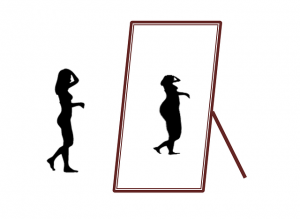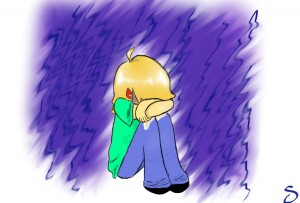Anorexia Nervosa – An eating disorder
Psychological disorders are medical conditions and they need to be identified, accepted, diagnosed and treated by doctors. In this article we would discuss eating disorders.
Eating disorders are classified as:
- Anorexia Nervosa (Excessive fear of weight gain)
- Bulimia Nervosa- (Binge eating)
Both the disorders would be discussed one by one to provide clarity on the symptoms, diagnosis and their treatment. This article would concentrate on one of the disorder.
Anorexia Nervosa:
This disorder generally effects the female gender and typically starts in adolescents and young adults. This disease typically has its tentacles on people falling under the middle and upper socio economic strata.
Diagnosis
Diagnosis of this disease is difficult as many social and cultural factors promote and maintain anorexic behaviour. Basically diagnosis depends upon identifying behavioural features accounting for weight loss.
largely behavioural features are like:

- intense fear of becoming obese
- disturbance of body image
- weight loss of at least 15%
- refusal to exceed the minimum normal weight so on and so fort
Sometimes the diagnosis takes into account endocrine and metabolic disorders such as panhypopituitarism( deficiency in pituitary hormone production), Addison’s disease(chronic adrenal insufficiency), hyperthyroidism(overactive thyroid), diabetes mellitus, gastrointestinal disorders, hypothalmic tumours(brain tumours) etc..
Clinical Findings:
Symptoms and signs
Patients with anorexia nervosa may exhibit severe emancipation and may complain of cold intolerance or constipation. Amenorrhea (absence of menstruation/periods) is almost always present.
In severe cases Bradycardia (low heart rate), hypotension (low blood pressure) and hypothermia (low body temperature) may be present.
Physical examination may demonstrate loss of body fat, dry and scaly skin and an increase in lanugo body hair (a covering of fine hair found in babies). Parotid enlargement (salivary gland) and edema (swelling) may also occur.
Laboratory Findings:
Laboratory findings are variable but they may include Anemia (reduced RBC or haemoglobin), Leukopenia (decreased white blood cells), Electrolyte abnormalities and elevation of blood urea nitrogen (BUN) and serum creatinine (signifies impaired kidney function).
Treatment
The goal of treatment is restoration of normal body weight and resolution of psychological difficulties. Hospitalization may be necessary. The success rate of treatment programs is around 75% during which normal weight and menstruation is restored.
Supportive care by doctors and nurses is probably most effective. Behaviour therapy, family therapy, intense psychotherapy may be tried.
Forced feedings should be avoided or kept as a last resort as the goal of these treatments are to restore normal eating habits.
Key takeouts
| Essentials of diagnosis | Disturbance of body image and intense fear of becoming fat |
| Weight loss leading to body weight being 15% below expected | |
| In females, absence of 3 consecutive menstrual cycles | |
| Tendency to effect | The female gender |
| Socio economic strata | Middle to upper class |
| Age | Occurs largely in adolescents and young adults |
| Behavioural characteristics | Depressive behaviour or anxiety |
| Perfectionist with obsessive behaviour |
